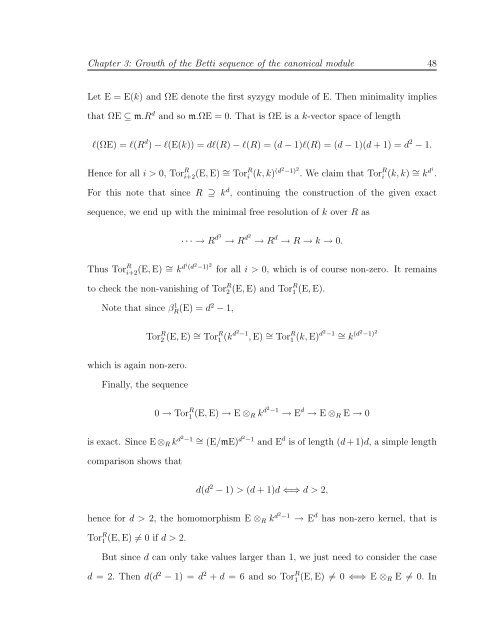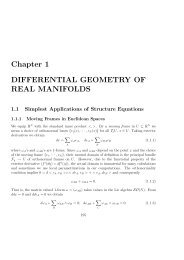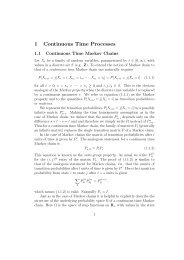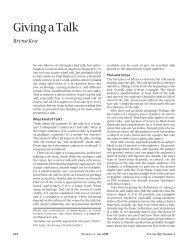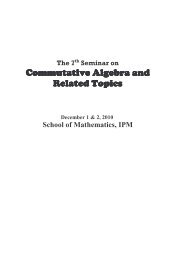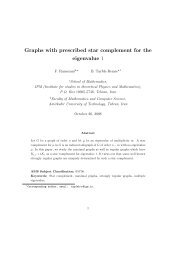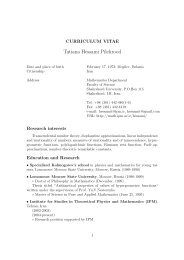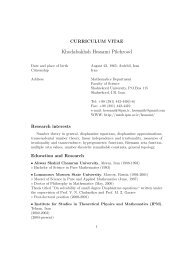Betti numbers of modules over Noetherian rings with ... - IPM
Betti numbers of modules over Noetherian rings with ... - IPM
Betti numbers of modules over Noetherian rings with ... - IPM
You also want an ePaper? Increase the reach of your titles
YUMPU automatically turns print PDFs into web optimized ePapers that Google loves.
Chapter 3: Growth <strong>of</strong> the <strong>Betti</strong> sequence <strong>of</strong> the canonical module 48<br />
Let E = E(k) and ΩE denote the first syzygy module <strong>of</strong> E. Then minimality implies<br />
that ΩE ⊆ m.R d and so m.ΩE = 0. That is ΩE is a k-vector space <strong>of</strong> length<br />
ℓ(ΩE) = ℓ(R d ) − ℓ(E(k)) = dℓ(R) − ℓ(R) = (d − 1)ℓ(R) = (d − 1)(d + 1) = d 2 − 1.<br />
Hence for all i > 0, Tor R i+2(E, E) ∼ = Tor R i (k, k) (d2−1) 2<br />
. We claim that Tor R i (k, k) ∼ = kdi. For this note that since R ⊇ k d , continuing the construction <strong>of</strong> the given exact<br />
sequence, we end up <strong>with</strong> the minimal free resolution <strong>of</strong> k <strong>over</strong> R as<br />
Thus Tor R i+2(E, E) ∼ = k di (d 2 −1) 2<br />
· · · → R d3<br />
→ R d2<br />
→ R d → R → k → 0.<br />
to check the non-vanishing <strong>of</strong> Tor R 2 (E, E) and Tor R 1 (E, E).<br />
Note that since β 1 R (E) = d2 − 1,<br />
which is again non-zero.<br />
Finally, the sequence<br />
for all i > 0, which is <strong>of</strong> course non-zero. It remains<br />
Tor R 2 (E, E) ∼ = Tor R 1 (k d2 −1 , E) ∼ = Tor R 1 (k, E) d2 −1 ∼ = k (d 2 −1) 2<br />
0 → Tor R 1 (E, E) → E ⊗R k d2 −1 → E d → E ⊗R E → 0<br />
is exact. Since E ⊗R k d2 −1 ∼ = (E/mE) d 2 −1 and E d is <strong>of</strong> length (d + 1)d, a simple length<br />
comparison shows that<br />
d(d 2 − 1) > (d + 1)d ⇐⇒ d > 2,<br />
hence for d > 2, the homomorphism E ⊗R k d2 −1 → E d has non-zero kernel, that is<br />
Tor R 1 (E, E) = 0 if d > 2.<br />
But since d can only take values larger than 1, we just need to consider the case<br />
d = 2. Then d(d 2 − 1) = d 2 + d = 6 and so Tor R<br />
1 (E, E) = 0 ⇐⇒ E ⊗R E = 0. In


